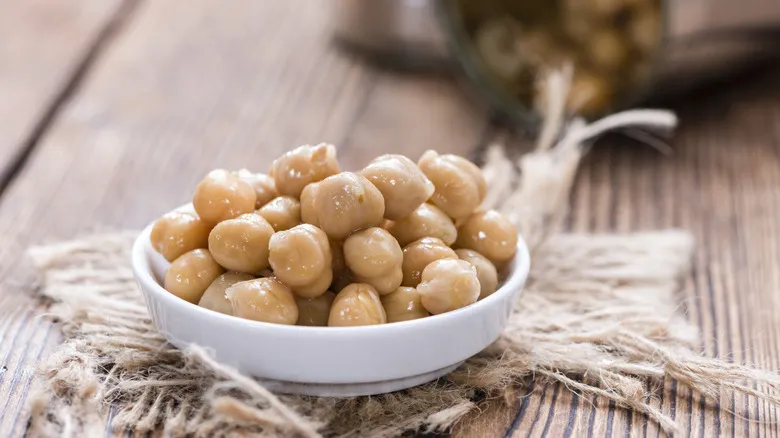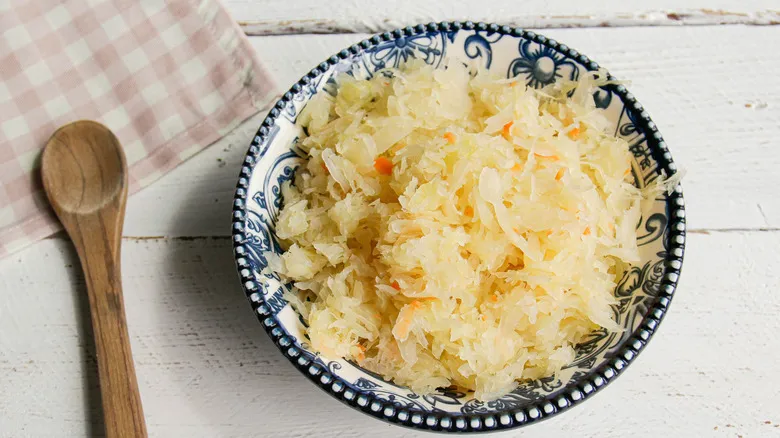Making sauerkraut at home is surprisingly simple

To make sauerkraut, you only need salt, a glass jar with a lid, and fresh cabbage (any variety works, but red cabbage can give you a more colorful result). Raw cabbage naturally contains a lactic acid bacteria known as Lactobacillus, and when you add salt, it draws out moisture to create a brine. This kneading process takes a few minutes, but eventually, you'll have enough liquid to fully submerge the cabbage (you can add a bit of water if needed). For fermentation to take place, you'll need to transfer the cabbage and brine into an oxygen-free environment, which is where your glass jar comes into play. Simply place everything in the jar and secure the lid.
Now, let Lactobacillus handle the fermentation. The salty environment encourages beneficial bacteria to convert the sugars in the cabbage into lactic acid while preventing harmful bacteria from thriving. This process lowers the pH and increases acidity, giving sauerkraut its characteristic sour flavor, crunchy texture, and rich probiotic content. Fermentation typically starts within a day but can take several weeks for the best taste. You'll notice the process has begun when bubbles appear on the surface. The flavor becomes more pronounced the longer it ferments, with the ideal period being around three to four weeks at room temperature. Remember to cover the jar with a cloth to allow airflow, which helps release the carbon dioxide produced during fermentation.
Recommended

Is It Safe To Eat Yellow Chicken?

A Bit Of Baking Soda Is The Secret To Soft And Creamy Canned Chickpeas

Why You Shouldn't Throw Away The Residual Potato Liquid When Making Latkes

Club Soda Gives You The Fluffiest Waffles Of Your Life
Next up

